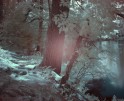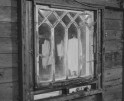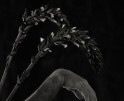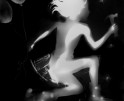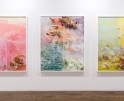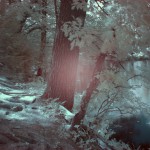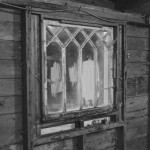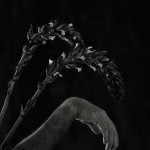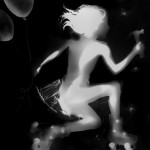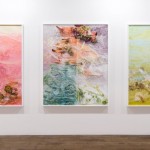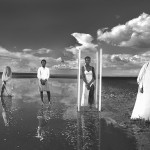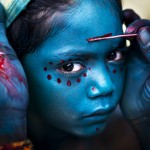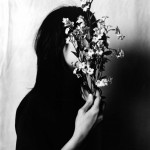Success Stories: Harvey Stein
When a photographer thinks of a success story, the name Harvey Stein certainly comes to mind. His name sounds familiar because he is someone who has led a rich photographic life and has much to show for it. Harvey is a professional photographer, teacher, lecturer, author and curator based in New York City. He currently teaches at the International Center of Photography and in the Master of Professional Studies Program in Digital Photography at the School of Visual Arts. Harvey is a frequent lecturer on photography both in the United States and abroad. He is the Director of Photography at Umbrella Arts Gallery, located in the East Village of Manhattan and has been a member of the faculty of the New School University, Drew University, Rochester Institute of Technology and the University of Bridgeport. In addition, Harvey teaches a number of well regarded workshops in the US and around the world (information can be found on his site).
To add to his long roster of achievements, Harvey has a new book, Coney Island 40 Years, recently published by Schiffer Publishing Ltd and a newly created website for the book and Coney Island, www.coneyisland40years.com. This new monograph is in addition to his other publications Parallels: A Look at Twins, E.P. Dutton (1978); Artists Observed, Harry Abrams, Inc. (1986); Coney Island, W.W. Norton, Inc. (1998); and Movimento: Glimpses of Italian Street Life, (Gangemi Editore, Rome). His photographs and portfolios have been published in every magazine imaginable, and he is widely exhibited with over 72 solo shows and 150 group show. Plus he has curated exhibitions for many venues, and his work is held in museum collections far and wide.
Cover image for Coney Island 40 Years ©Harvey Stein 2011

When you began the project 40 years ago, did you ever imagine that Coney Island would continue to draw your interest for so many years?
I never imagined that going to Coney Island in 1970 to photograph, at the suggestion of my teacher at the time, Ben Fernandez, would ever result in going back for 40 years to shoot there. I’d call anyone either crazy or a genius for doing anything photographic that long. And I know I’m not a genius. I’m just moved by the crush of humanity and beauty and funkiness of the place. It’s small but amazing, and it’s hard to say why. When first there, it doesn’t seem like much. It’s really a shell of what it was from, say 1900-1950. But it grows on you, gets into your blood, and you want to return again and again. The variety of people, and their activities are very visual and usually quite fascinating, at least for me.
Man Wearing Bow Tie, ©Harvey Stein 2011

Is there something in particular that intrigues you about the place?
Coney Island is about people, it’s the people that intrigues me and what I am always drawn to to photograph. All sizes, shapes, races, ages, religions, behaviors. The amusements, the sea, the open air, the sun and sand all impart a kind of freedom of behavior that I don’t see anywhere else. And I am interested in the contradictions and ironies present in its social world. I am always impressed with how we all get along at Coney Island.
Happy New Year Man, ©Harvey Stein 2011

What type of photography were you drawn to at the beginning of your career?
When I started, I did street and documentary photography and I still do. I love being on the streets shooting mostly strangers. After about 10 years of doing this, I began to photograph in the studio. I feel energized and creative there also, and do it often, but my first love is the street with the action and surprises and challenges that it provides.
Woman with Downcast Eyes, ©Harvey Stein 2011

I would love to have you share your thoughts on the photography world today versus even 15 years ago. Do you think it is more difficult to navigate the waters today?
The obvious huge difference in the photography world today versus 15 years ago is how digital we are now. I love film, Coney Island 40 Years is all black/white film, but I am shooting digitally about 40% of the time since 2006. My first choice is to shoot film, I think I’m better using it and feel more comfortable with it. If it’s an important shot, I’ll do it with film, but I’m usually shooting for myself. The commercial photography world mostly requires digital shooting. In many ways, digital photography is easier, and it certainly allows anyone to call themselves a photographer. So in that way, the fact that there are many more photographers today than 15 years ago, it is harder to “navigate the waters”. The prestige outlets, especially magazines, have largely disappeared, but there are probably more outlets for photography these days including blogs, websites, social media, and even galleries. It’s very diverse now, there are probably more opportunities along with the heightened competition.
Crowd up Close, ©Harvey Stein 2011

What event or opportunity took your work to the next level?
I can’t say one event or opportunity took my work to the next level. I feel that hard work, persistence and a belief in what I do all help me to succeed, if I indeed have succeeded. I don’t “play” to the marketplace, I do what I like to do, and I go my own way, working on my self-assigned projects. My hope is to turn these projects into books, which for me, is the peak achievement. Books live a lot longer than the monthly gallery show or magazine publication, and it gives me a chance to shape and control the work more than any other outlet I know. I edited, sequenced and designed Coney Island 40 Years. It is all up to me, success or failure is in my lap, and I like it that way. I have at least 6 book projects finished and ready for publication. But my one rule is to find someone to publish them, not to self publish.
Smiling Woman, ©Harvey Stein 2011

What advice can you give emerging photographers, especially on presentation, on networking, on consistently producing excellent work?
I’d tell emerging photographers to thoroughly learn your craft, work hard and constantly, work on a single themed project, don’t try to do every kind of photography, be true to yourself and photograph what you love and what you are totally passionate about, don’t obsess about success or making money because that is rather empty and ultimately unrewarding, and be kind to your subjects.
Networking is important but don’t be obnoxious or overbearing. Have a website, probably a blog, and make prints to show, whether for a portfolio or your own enjoyment. Keep photography fun, an inspiration, a need for self-expression, and not a business.
Twirling a Hula-Hoop,©Harvey Stein 2011

Are you involved in social networking outlets? Do you tweet or are you active on Facebook?
I have twitter and Facebook accounts but have never sent a tweet, and only rarely have been on Facebook. I hope this will change, I see them as important marketing tools. I think I’m just a bit wary of them both, for no good reason, and have to find time to learn and use them properly.
Woman in Striped Shirt, ©Harvey Stein 2011

You are an amazing portrait photographer. You seem fearless in what you capture and have the ability to find moments that distill gestures and expressions. What is your favorite way of working with people?
I work with people as intimately as possible, I put them in the spotlight, and watch my subjects closely, their movements and mannerisms. I try not to play into their needs but to meet my own—and try to understand my motivations and ideas for photographing them. If they like the portrait, fine, if not that’s OK too, I need to satisfy myself first. As a result, I don’t really do portraits commercially, I photograph who I want to be with and who I think is interesting in one way or another, whether because of their looks (and not necessarily beauty) or personality or place on this planet. I enjoy being with people and like them, by and large, and take them as they are. I’m not interested in making them look good or bad, I am interested in how I feel about them and how they behave in front of the lens. And I look for the “off” moment, something different, off kilter, a bit strange, certainly powerful and revealing of the moment. I always want my subject to look into the lens, it makes for a stronger image by involving me and the viewer more directly.
The Happy Mermaid, ©Harvey Stein 2011

It’s interesting that you have used pinhole and a Holga for your images of the natural world. Is there a reason for those choices?
That is an interesting observation. I’ve done some portraits with the pinhole and Holga cameras, but mostly I do use them for landscapes, city views, architecture and scenes. Probably because the cameras are slow to use, especially the pinhole camera. I love using these cameras, they take me away from street shooting and into gardens, forests, swimming pools, and still subjects that I’d overlook otherwise. They expand my horizons and add to my interests and repertoire. In many ways, they are fun, light and freeing, but I treat my output with them seriously. I’ve sold more photographs made by the Holga than all my other cameras combined. Hmmmm, might say something profound, I just have to figure that out.
Black Hooded Man, ©Harvey Stein 2011

Do you ever have periods of self-doubt and feel creatively unmotivated?
In a word, no, that has never happened and I’d be very surprised if it ever will. As long as I am curious and continue my desire to learn and to see, I will be motivated and with that comes work and making new images and pursuing new ideas.
The Hug; Eyes Closed and Smile, ©Harvey Stein 2011

And finally, what would be your perfect day?
A good meal with good people, a few terrific images made, seeing new things in a new place, and getting some rest. Perfecto! And Adios.
Images from Mexico and Peru
Effigies, San Miguel, Mexico, ©Harvey Stein 2006

Exploding Effigies, San Miguel, Mexico, ©Harvey Stein 2006

Fireworks, Ollantaytambo, Peru, ©Harvey Stein 2010

Old Women Ollantaytambo, Peru, ©Harvey Stein 2010

Outside Cusco, Peru, ©Harvey Stein 2010

Raising Jesus, Queretaro, Mexioc, ©Harvey Stein 2008

Religious Procession, Taxco, Mexico, ©Harvey Stein 2009

Selling Meat, Cusco, Peru, ©Harvey Stein 2010

Posts on Lenscratch may not be reproduced without the permission of the Lenscratch staff and the photographer.
Recommended
-
Interview with Kate Greene: Photographing What Is UnseenFebruary 20th, 2024
-
Semana Mexicana: Felipe “Chito” TenorioFebruary 5th, 2024
-
Amy Lovera in Conversation with Douglas BreaultJanuary 23rd, 2024
-
Michelle Bui: Affinités poreusesDecember 27th, 2023



